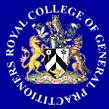|
Initial Assessment Methods
(Adapted from AHCPR 1994)
X-Rays
Psychosocial Factors
Risk factors for chronicity
Management
Information to Patients
|
Initial Assessment Methods (Adapted from AHCPR 1994)


|
The patient’s age, the
duration and description of symptoms, the impact of symptoms on activity
and work, and the response to previous therapy are important in the care
of back problems. (B) |


|
The initial clinical history
can identify ‘red flags’ of possible serious spinal pathology. Such
inquiries are especially important in patients over the age of 55. (B) |

|
Symptoms and signs of cauda
equina syndrome, widespread neurological involvement and severe or
progressive motor weakness are ‘red flags’ for severe neurological
risk. (C) |

|
A history of significant
trauma relative to age (for example, a fall from a height or motor vehicle
accident in a young adult or a minor fall or heavy lift in a potentially
osteoporotic or older patient) raises the question of possible fracture.
(C) |


|
Initial assessment
should include psychological and socioeconomic problems in the individual’s
life since such non-physical factors can complicate both assessment and
treatment. (B) |


|
Straight leg raising (SLR)
should be assessed and recorded in young adults with sciatica. In older
patients with spinal stenosis, SLR may be normal. (B) |


|
Examination for neurological
deficits should emphasise ankle and knee reflexes, ankle and great toe
dorsiflexion strength, and distribution of sensory complaints. (B)
Waddell 1982, Deyo et al 1992, van den
Hoogen et al 1995
|
|







